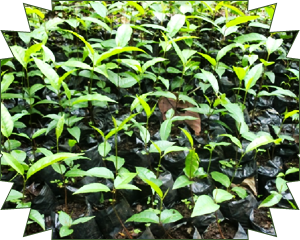 Agroforestry is the pathway to biodiversity conservation. It has always been the mainstay of traditional farming in Cameroon and with climate change and soil biodiversity loss it is even more vital. Trees play a crucial role in almost all terrestrial ecosystems and provide a range of products and services to rural and urban people. As natural vegetation is cleared for agriculture and other types of development, the benefits that trees provide are best sustained by integrating trees into agriculturally productive soils.
Agroforestry is the pathway to biodiversity conservation. It has always been the mainstay of traditional farming in Cameroon and with climate change and soil biodiversity loss it is even more vital. Trees play a crucial role in almost all terrestrial ecosystems and provide a range of products and services to rural and urban people. As natural vegetation is cleared for agriculture and other types of development, the benefits that trees provide are best sustained by integrating trees into agriculturally productive soils.
CiSEGD therefore engages in agroforestry to tackle food crises and climate change. CISEGD develop a tree nursery and planted 5000 trees of prunus african. In our effort to fight hunger through agroforestry; CISEGD with members of the community developed and initiated a tree yam project that is aimed at improving soil conservation and increasing yam production for rural women farmers while acting as stakes. The project has planted 10000 trees made up of Sesbania, tephrosia and calliandra as well as trained 100 rural women farmers from 5 farming groups.

 Recently many people are realizing that agroforestry can enrich biodiversity. Trees add to the diversity and complexity of plant communities and provide shelter and corridors for wildlife. Birds, insects and small mammals nest, feed and shelter from predators in trees, which in turn attract insects and birds that pollinate crops and destroy pests.
Recently many people are realizing that agroforestry can enrich biodiversity. Trees add to the diversity and complexity of plant communities and provide shelter and corridors for wildlife. Birds, insects and small mammals nest, feed and shelter from predators in trees, which in turn attract insects and birds that pollinate crops and destroy pests.
Planting local trees adapted to local conditions maintains the native plants (flora) and animals (fauna). Certain trees and shrubs known as fertilizer trees can fix nitrogen in the soil, and so help create an environment that maintains soil biodiversity – beneficial microorganisms underground that keep soils rich and productive.

